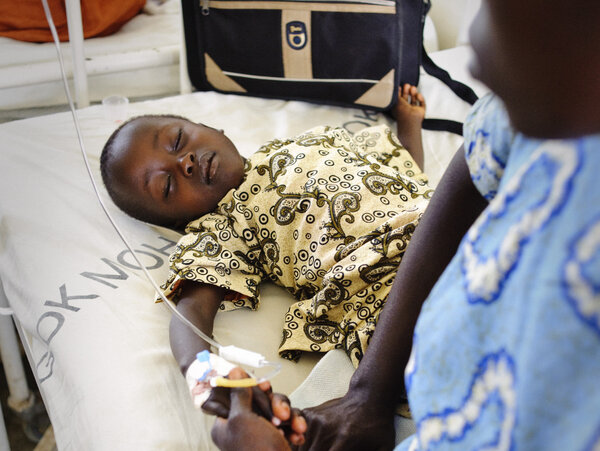Severe Malaria Criteria, Features & Definition
Malaria is a life-threatening disease caused by parasites that are transmitted to people through the bites of infected female Anopheles mosquitoes. It is preventable and curable.
Malaria is caused by Plasmodium parasites. The parasites are spread to people through the bites of infected female Anopheles mosquitoes, called "malaria vectors."
There are 5 parasite species that cause malaria in humans, and 2 of these species – P. falciparum and P. vivax – pose the greatest threat.
- P. falciparum is the most prevalent malaria parasite on the African continent. It is responsible for most malaria-related deaths globally.
- P. vivax is the dominant malaria parasite in most countries outside of sub-Saharan Africa.
What is severe malaria?
Overview:
Severe malaria typically occurs due to delayed treatment of uncomplicated malaria. This stage of the disease is defined by clinical or laboratory evidence of vital organ dysfunction. Nearly all deaths from severe malaria result from infections with P. falciparum, although P. vivax and P. knowlesi can also cause severe disease.
Epidemiological definition
Severe malaria is defined as one or more of the following, occurring in the absence of an identified alternative cause, and in the presence of P. falciparum asexual parasitaemia.
Impaired consciousness
A Glasgow Coma Score <11 in adults or a Blantyre coma score <3 in children
Acidosis
A base deficit of >8 meq/l or, if unavailable, a plasma bicarbonate of <15 mM or venous plasma lactate >5 mM. Severe acidosis manifests clinically as respiratory distress – rapid, deep and laboured breathing
Hypoglycaemia
Blood or plasma glucose <2.2 mM (<40 mg/dl)
Hyperparasitaemia1
Hyperparasitaemia is a major indicator of a poor prognosis in children and adults with severe falciparum malaria; however the relation between parasitaemia and prognosis varies according to the level of malaria transmission.
In low-transmission areas, mortality from acute falciparum malaria begins to increase with parasite densities over 100 000/µl (~2.5% parasitaemia), whereas in areas of higher transmission much higher parasite densities may be well tolerated. Parasitaemia > 20% is associated with a high risk in any epidemiological context.
Severe malarial anaemia
A haemoglobin concentration <5 g/dl or a haematocrit of <15% in children <12 years of age (<7 g/dl and <20%, respectively, in adults) together with a parasite count >10 000/μl
Renal impairment (acute kidney injury)
Plasma or serum creatinine >265 μM (3 mg/dl) or blood urea >20 mM
Jaundice
Plasma or serum bilirubin >50 μM (3 mg/dl) together with a parasite count >100 000/μl
Pulmonary oedema
Radiologically confirmed, or oxygen saturation <92% on room air with a respiratory rate >30/min, often with chest in-drawing and crepitation on auscultation
Significant bleeding
Including recurrent or prolonged bleeding from nose gums or vein puncture sites; haematemesis or melaena
Shock
Compensated shock is defined as capillary refill ≥3 s or temperature gradient on leg (mid to proximal limb), but no hypotension. Decompensated shock is defined as systolic blood pressure <70 mm Hg in children or <80 mm Hg in adults with evidence of impaired perfusion (cool peripheries or prolonged capillary refill).
